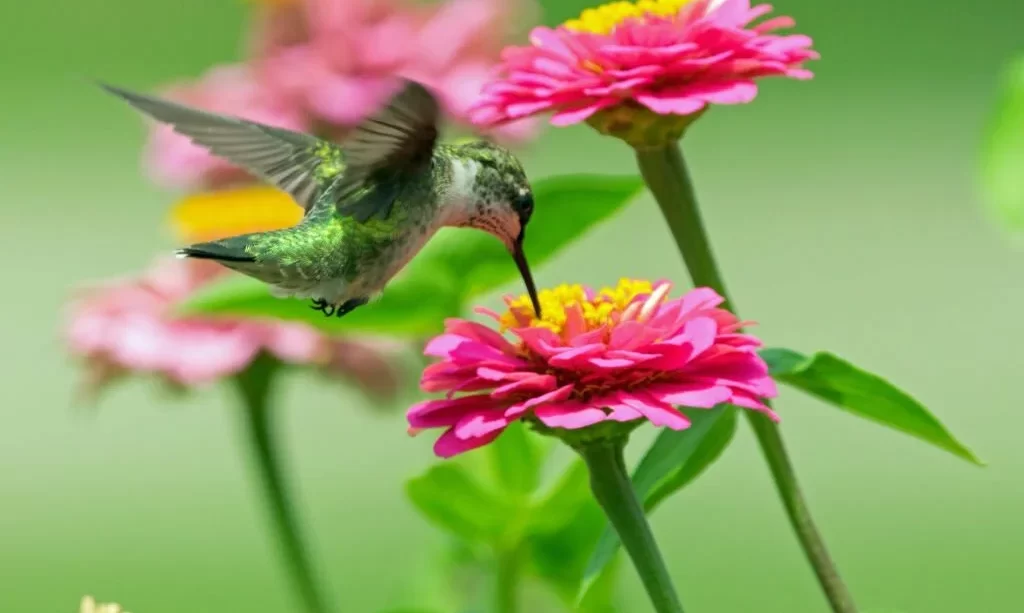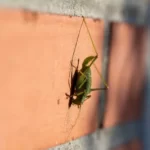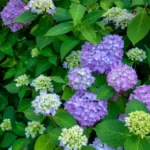Hummingbirds, those enchanting and iridescent jewels of the avian world, have a special place in the hearts of bird enthusiasts and gardeners. They are known for their unique ability to hover in mid-air and their insatiable appetite for nectar. In this article, we’ll explore the intriguing connection between hummingbirds and zinnias, one of the most beloved garden flowers. Do hummingbirds have a preference for zinnias, and if so, what makes these vibrant blooms so appealing to these tiny aerial acrobats? Understanding the potential attraction of hummingbirds to zinnias adds a touch of wonder to the world of these fascinating birds and the role of flowers in their lives.
The World of Hummingbirds
Hummingbirds, with their remarkable agility and rapid wingbeats, are a unique group of birds found in the Americas. Their name is derived from the humming sound created by their wings, which can beat up to 80 times per second. These birds are primarily nectar feeders, relying on the natural sugars found in flower nectar for their energy. Their long, specialized bills and extendable, tube-like tongues enable them to extract nectar from flowers.
Nectar is a primary source of sustenance for hummingbirds, providing them with the energy required for their high metabolic rates. While nectar is the cornerstone of their diet, hummingbirds also consume insects and spiders for additional protein. To obtain nectar, hummingbirds visit a variety of flowers, each with its unique shape, color, and nectar-producing attributes.
The Allure of Zinnias for Hummingbirds
Zinnias, known for their brilliant and diverse array of colors, are among the garden favorites of many. These annual flowering plants are not only visually appealing but also boast nectar-rich blossoms. Zinnias come in various shapes and sizes, but they are commonly recognized for their daisy-like heads adorned with colorful petals.
The nectar-producing capabilities of zinnias make them a potential magnet for hummingbirds. These birds are highly attracted to flowers that provide ample nectar, as it serves as their primary energy source. The vibrant hues and the nectar content of zinnias create an enticing combination that can attract hummingbirds looking for a quick and energy-rich meal.
Zinnias’ appeal to hummingbirds is not only due to their nectar but also because of their accessibility. The flat, open structure of zinnia blooms allows hummingbirds to approach and feed easily, making them convenient pit stops for these tiny aviators.
In the following sections, we’ll explore the role of zinnias in hummingbird gardens, the specific hummingbird species that may be attracted to zinnias, and the overall significance of zinnias in the hummingbird-friendly landscaping.
The Role of Zinnias in Hummingbird Gardens
Zinnias play a significant role in creating hummingbird-friendly gardens. These colorful blooms offer numerous benefits for both gardeners and the resident hummingbirds. The vibrant and nectar-rich zinnias serve as a reliable and easily accessible food source for these tiny, high-energy birds.
In hummingbird gardens, zinnias can complement other nectar-bearing plants, creating a diverse and attractive floral landscape. The combination of zinnias with other hummingbird-favored flowers can extend the blooming season and ensure a steady supply of nectar for these feathered visitors. The vibrant colors of zinnias also add visual appeal to the garden, enhancing its beauty and making it a more enjoyable space for humans and wildlife alike.
The role of zinnias extends beyond providing nourishment. By planting zinnias in gardens, you can actively contribute to the conservation of hummingbirds. Creating a welcoming habitat with an abundance of nectar-rich flowers like zinnias can help support these tiny avian marvels, particularly in regions where hummingbirds are prevalent. Hummingbird gardens have become popular for bird enthusiasts, and zinnias are often a cherished part of this habitat.
Types of Hummingbirds Attracted to Zinnias
The attraction of hummingbirds to zinnias can vary based on geographic location and hummingbird species. In North America, where many species of hummingbirds are found, different types of hummingbirds may show varying degrees of interest in zinnias. Some common hummingbird species known to be attracted to zinnias include the Ruby-throated Hummingbird, Rufous Hummingbird, and the Black-chinned Hummingbird.
The preferences of these species may be influenced by factors such as local flower availability, the timing of migration, and the specific characteristics of zinnias. For instance, the Ruby-throated Hummingbird, a species found in the eastern parts of North America, is known to visit zinnias for their nectar, especially during their migration.
It’s important to note that while zinnias can attract various hummingbird species, it’s not the sole source of their nutrition. Hummingbirds are opportunistic feeders and will visit a range of nectar-producing flowers, including zinnias, as they explore their environment.
- ATTRACTIVE FEEDER: (Set of 2) 10 ounces of nectar in this feeder attract multitudes of hummingbirds to your backyard. 7 flower-shaped feeding ports and perches are arranged in a circular manner for several birds to feed.
- LEAKPROOF RESERVOIR: The mouth of the reservoir tightly screws onto the base, effectively sealing the bird feeder. After filling the container and screwing it onto the base, flip it over; the feeder will not leak even while upside down.
- ANT GUARD FOR HUMMINGBIRD FEEDERS: An ant moat is attached to the top of the feeder. Fill it with water and drive away any approaching bugs. Ensure the nectar you prepared for the hummingbirds is pure and free of any creepy-crawlies.
- ERGONOMIC DESIGN: The wide mouth ensures effortless cleaning and filling, and the 2-part base easily twists apart for an effortlessly thorough cleaning job. Of clear hard plastic, you can monitor nectar levels so you always know when to refill. Hand-wash only; Not dishwasher safe.
- SECURE HANGING: No tools are required! The hummingbird feeder is slipped onto a tree with an s-shaped hook or tightly tethered with a loop rope. (Both are included.) Hang the feeder from a height of 5 feet above ground. enjoy watching the birdies flock.
Conclusion
In conclusion, the relationship between hummingbirds and zinnias is one of mutual benefit and natural beauty. Zinnias, with their nectar-rich and vibrant blooms, have the power to lure hummingbirds into gardens, creating a harmonious space for both humans and these delightful avian visitors.
The role of zinnias in hummingbird gardens extends beyond their aesthetic appeal. They provide a consistent source of nourishment for these high-energy birds, contributing to their well-being and potentially aiding in their conservation. By incorporating zinnias in gardens, you not only enhance the visual charm of your outdoor space but also actively participate in supporting hummingbirds and preserving their place in the natural world.
As you plant zinnias and create hummingbird-friendly gardens, you foster a connection between nature and your surroundings. This connection reminds us of the delicate balance of life and the significance of preserving habitats that benefit both the avian wonders and the enthusiasts who appreciate their visits.



![Hummingbird Feeder 10 oz [Set of 2] Plastic Feeders for Outdoors, with Built-in Ant Guard - Circular Perch with 5 Feeding Ports - Wide Mouth for Easy Filling/2 Part Base for Easy Cleaning](https://m.media-amazon.com/images/I/41N8NIjdwJL._SL160_.jpg)

